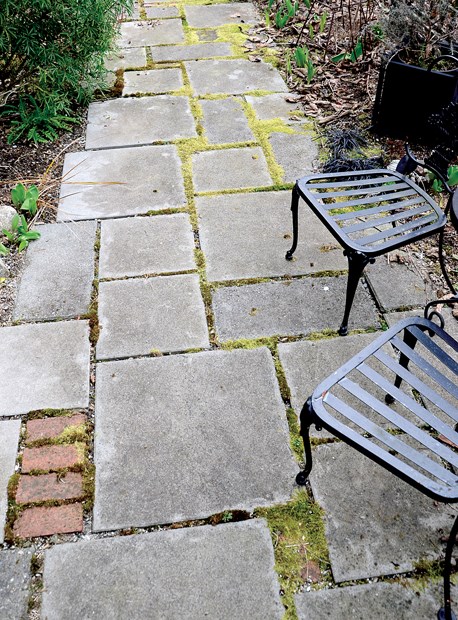When it comes to landscaping your home, backyards are usually given more attention than the rest of the yard.
However, the traditional role of the front yard is changing as we grow to be more sustainable and lowmaintenance and change is a good thing in the garden.
The front yard provides the first impression your guests and community members enjoy, or not, and to that end, here are some of the basic guidelines for landscaping the front yard as well as a few unusual ideas to consider.
The basics: Firstly, make the house visually appealing to the public's view while complementing the home's design. Planting should not overwhelm the house and the house should not overwhelm the landscape - in other words, design for balance. This is a difficult task to achieve in an era of overbearing monster homes. Secondly, plant trees to screen unwanted outward views and to create favourable inward views of the home. Please do not plant large-growing trees under power lines. Thirdly, for plantings against the house, known as foundation plantings, choose plants that grow to a mature size that will not exceed onethird to half of the height from the ground to the first roof gutter. This will keep plantings in proportion to the house.
Fourthly, use less grass and more planting beds at a proportion of 70 per cent bed and 30 per cent lawn (preferably no lawn but people still like grass so we have to be realistic). More planting beds will provide greater visual interest and more beds will improve the proportional balance between home and landscape, making the property look fuller, richer and more balanced. Design to create a clear view of the front door so visitors can find their way and feel welcomed.
Creating curb appeal: Colour, texture and proportional balance all play a role in creating curb appeal. If you're selling your home, adding some annuals, fresh mulch and trimming the lawn may be all that is needed. But for the long-term homeowner, curb appeal is more than cleanliness and splashes of colour. Flowers are fleeting but leaf texture provides a continuous visual presence so choose well-designed plantings that are interesting in more than one season to create a sense of place yearround. Choose shrubs that have beautiful foliage yearround, like rhododendron, and trees that have interesting bark in winter. Strategically place annuals and perennials to provide colour from views inside the house and for community benefit.
When it comes to lawn, well. .. lawn is so 1950s and we are moving past it as a medium for our landscaping creativity. However, some lawn can assist in acting as the void space that sets off the solid planting space. The key is to find a balance as previously mentioned. Nothing creates better curb appeal than a mulched planting bed because mulch is the canvas that unifies the painting (landscaping).
Fit the house into the landscape: Gordon Hayward said, "Houses should be in, rather than on the landscape." Hayward is a landscape designer, writer and lecturer from Vermont and his quote aptly describes the relationship between home and the landscape. In some cases landscapes are allowed to overgrow the home but more commonly houses simply dominate the landscape.
Finding balance begins with proper plant selection, meaning the right plant for the right place. Choose plants suited for the conditions and more importantly, choose plants that will grow to a mature size proportionally appropriate for the scale of the home and the planting location. Trees are somewhat exempt from that rule due to their value in framing the house. However, a giant cedar tree right next to the front door is going to be problematic visually and from a maintenance standpoint. Alternately, a small little crab apple tree lost out in the lawn provides no benefit to scale.
Ideas for free thinkers: Gardening today is about individual expression, sustainability and lowmaintenance. Many free thinkers have pushed the boundaries of what is traditionally acceptable for the front yard to create beautiful and welcoming spaces that include no lawn boulevards, veggie beds, artistic fences, water gardens, rock gardens and more. A few of us have even eliminated all lawn and replaced it with privacy plantings that surround patios for entertaining, which can be especially useful if you have a small backyard but larger front yard, or a backyard that is heavily shaded and the front yard is sunny and warm.
Rules are one thing but gardening and landscaping your home is really a form of creative expression, an idea that needs wider acceptance.
Perhaps if we change our mindset to become a little more free-thinking, we can follow our individuality to create beauty in our front yards.
Todd Major is a journeyman horticulturist, garden designer and builder, teacher and organic advocate. For advice contact him at stmajor@shaw.ca.



